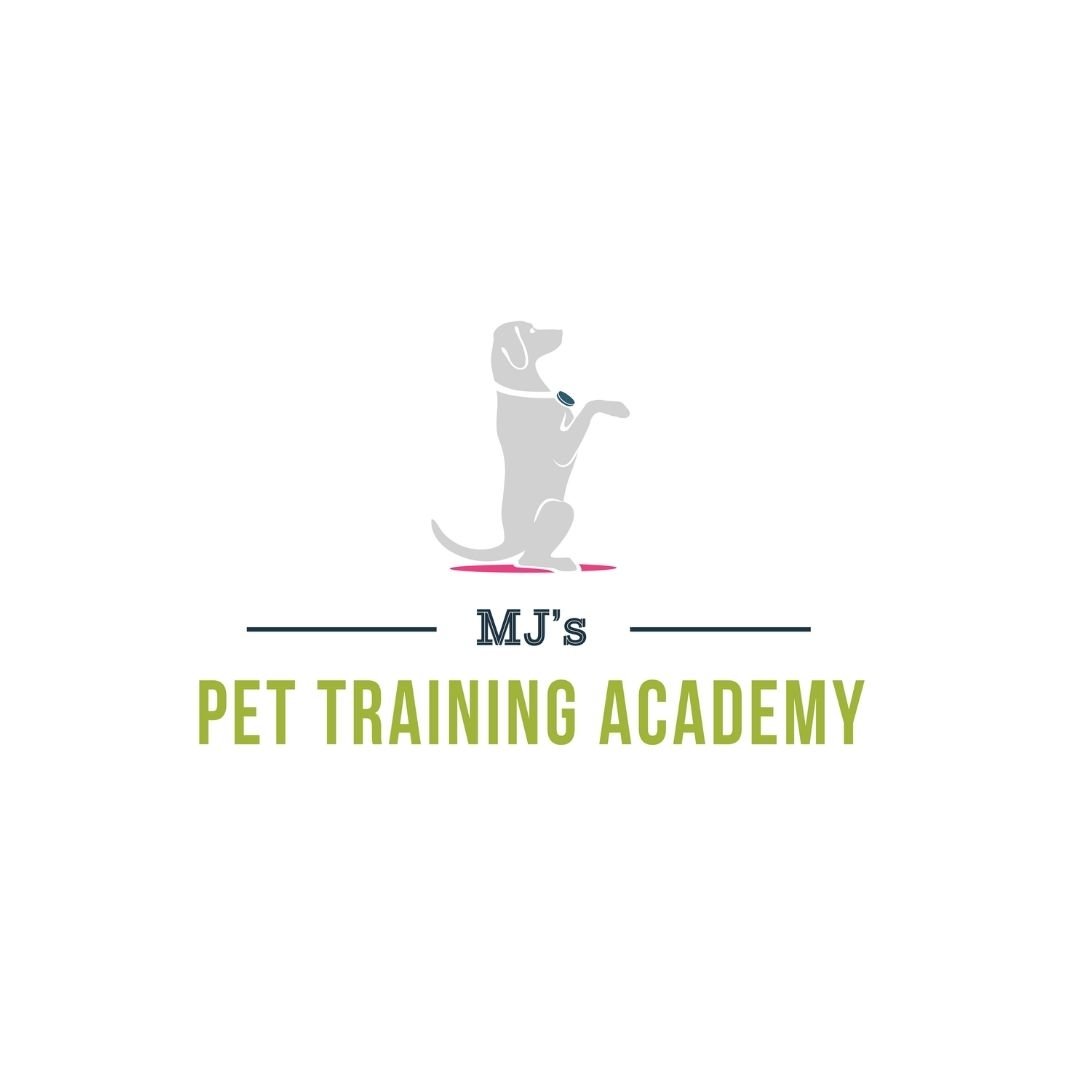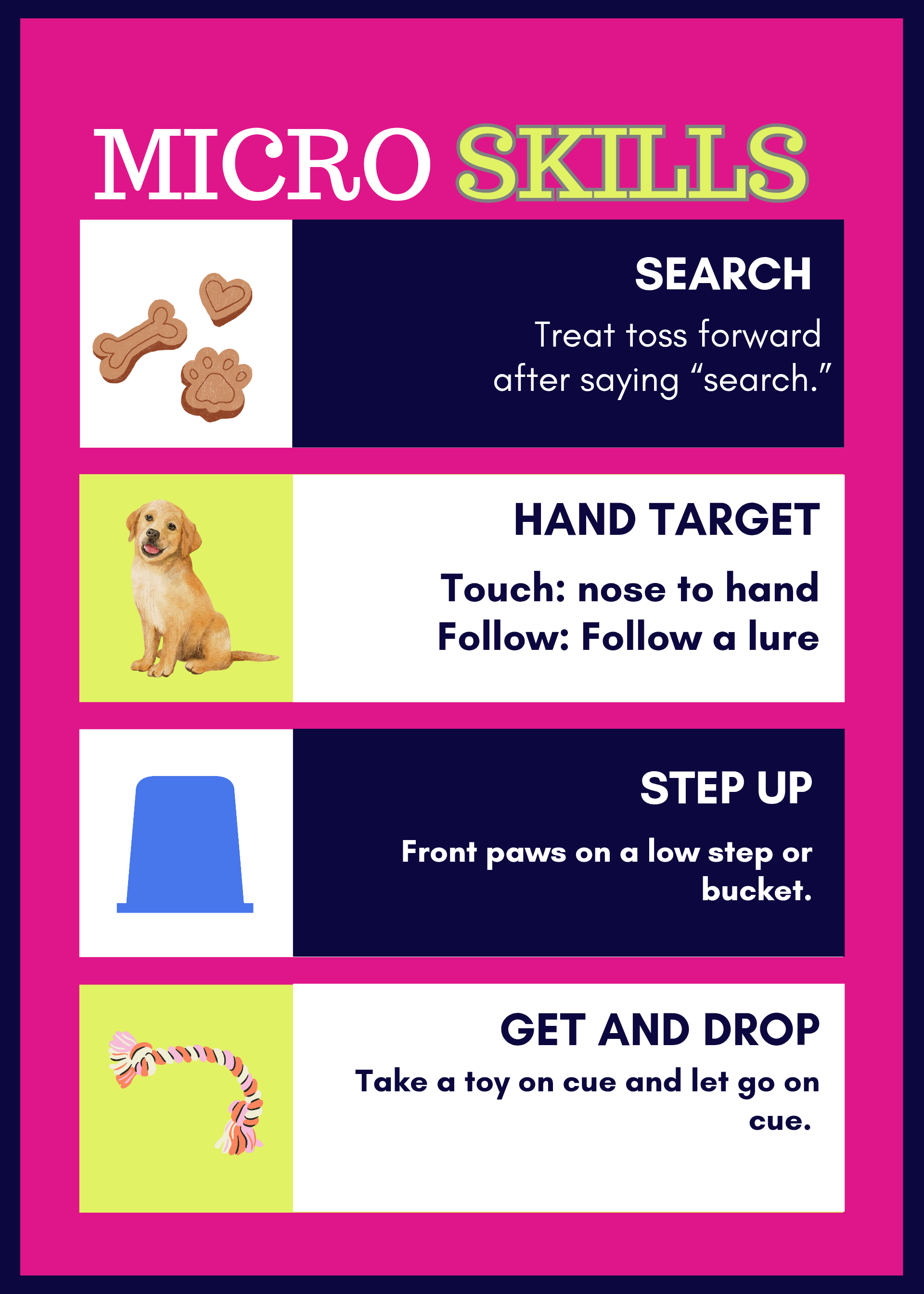What Are Microskills in Dog Training? The Key to Reliable, Real-World Results
When it comes to dog training, flashy tricks and advanced obedience often steal the spotlight. But behind every well-trained dog is a set of invisible building blocks known as microskills. These tiny but mighty skills lay the foundation for everything else, from polite leash walking to rock-solid stays.
At MJ's Pet Training Academy®, we believe microskills are essential for both dogs and handlers. They form the habits, patterns, and communication cues that make training effective—and enjoyable.
What Are Microskills?
Microskills are the smallest functional skills used during training. Think of them as small actions, positions, or cues that get practiced over and over. They include how your dog takes food, how you deliver cues, your body posture, and even how you handle a leash.
Dogs with strong microskills respond better, focus longer, and generalize more easily to new environments. Handlers with solid microskills create clear communication, reduce frustration, and become confident trainers.
Handler Microskills
Hand Positions
Where your hands are when training matters more than you think. Practice using "quiet hands" at your sides so your dog learns to respond to verbal cues—not just food movement.
Food & Toy Delivery
Poor delivery can undermine progress. Practice delivering food from different spots (treat pouch, dish, both hands) and delivering with precision. The same goes for toys in training: mark, and release clearly. Your dog should never take toys from you without permission.
Markers
Multiple markers allow for advanced communication. For example:
“Yes” = deliver food to dog
“Search” = toss food away
“Get it” = take toy
Leash Handling
Practice leash technique without your dog to avoid wrapping, tension, or inconsistent signals. Your grip, posture, and switching hands smoothly all matter.
Voice & Movement Control
Say cues once, clearly. Avoid repeating cues or excessive chatter. Your dog listens closely to tone, cadence, and body posture.
Dog Microskills
Food Etiquette
Dogs should take treats politely. They should wait for permission to grab food or toys.
Release Cues & Duration
Duration isn’t just for stays. Teach your dog to maintain stillness in a sit, touch, or nose target until released with a word like "Break."
Search & Leave-It
"Search" tells your dog to find tossed food, while "Leave it" teaches control around dropped or tempting items. Practice alternating between both.
Eye Contact
Train your dog to offer eye contact after completing behaviors as a way of saying, "I’m ready."
Calm Handling
Microskills like waiting to exit the car, calmly having a leash clipped, and settling next to you are crucial for real-world success.
Skills like "touch," "target," "step," and "circle" help build body awareness and engagement, especially for trick or enrichment training.
Why Microskills Matter
Microskills turn random training into reliable performance. Even advanced trainers benefit from returning to microskills—to refine timing, improve engagement, or troubleshoot setbacks.
How to Start Practicing Microskills
Practice new movements without your dog first
Film short training clips and evaluate your mechanics
Break down one behavior into all its micro parts
Use sessions to reinforce foundational skills like eye contact, leash manners, or calm toy play
Final Thought
You don’t need hours of free time or fancy equipment to start working on microskills. You just need observation and a willingness to slow down and look closer.
At MJ’s Pet Training Academy®, we weave microskills into every program—from Trickovation™ to Manners Quest—because we know the smallest habits create the biggest results.

